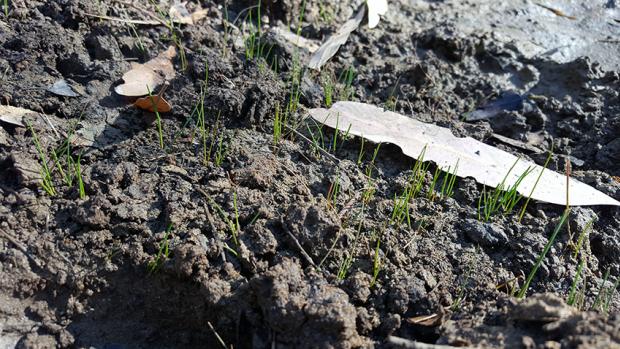Loading
Rare plan to improve health of the Campaspe River

A unique opportunity has arisen to repair damage to the Campaspe River caused by the Millennium Drought and the 2010-11 floods, in what could be a Victorian first.
The combined impacts of regulation, drought, and floods has severely damaged vegetation on the lower banks and benches of the river. And while the river health has improved in recent years due to water for the environment, it has never fully recovered.
“What little vegetation that grew back after the drought was scoured away during the floods,” North Central Catchment Management Authority (CMA) Water for the Environmental Project Manager Darren White said.
“While the vegetation is recovering well in places, it hasn’t got back to the levels it was before the drought.
“With irrigation water deliveries at certain times of the year, there hasn’t been an opportunity to focus on rebuilding those sections of the river, but there is now.”
The recent wet weather has caused irrigation demand to drop off at the right time of the year, creating a rare opportunity for action.
“We have a unique opportunity here, given the Campaspe is a highly regulated river, to make some big inroads into re-establishing that vegetation,” Mr White said.
“Without irrigation water, we can keep water flows at about 20ML a day from Eppalock Reservoir to Rochester, to expose those lower benches and banks.”
Mr White said that exposure to air and sunlight at this time of year may help the vegetation re-establish itself on those key parts of the river.
“The low flow aims to replicate the natural drawdown of river levels at the end of summer that is important for plant recruitment but no longer occur due to river regulation,” he said.
“Then we’ll ramp the flows up slowly to 50ML a day giving any vegetation that has established the opportunity to adapt to slightly deeper water.
“Healthy vegetation means better filtration and more waterbugs, which means more food for fish and platypus.
“We’re working closely with the Arthur Rylah Institute on this plan, and if successful it will help inform river management across Victoria.
“This could be the first time anyone in Victoria has had an opportunity to do this with extensive monitoring. We don’t get many chances like this to re-stablish vegetation and improve the health of a river this way.”
The flow alterations will begin from about May 9.
“From Eppalock to Rochester the water will look a bit low for a couple of weeks, but from Rochester to Echuca there will be no change,” Mr White said.
“Water will remain high in existing pools, and the lower flow will still connect them, so it’s unlikely there’ll be any negative impact on fish or platypus.
“This event shows improving the health of a river is more than just about adding water for the environment.”
The North Central CMA manages environmental flows on behalf of the Victorian Environmental Water Holder (VEWH). The flows are authorised by VEWH in line with its Seasonal Watering Plan 2021-22.
The Plan is available for download from www.vewh.vic.gov.au, with regular watering updates posted on the North Central CMA website. www.nccma.vic.gov.au.
The research project will be delivered by scientists at the Arthur Rylah Institute and is funded through Stage 7 of the Victorian Environmental Flows Monitoring and Assessment Program (VEFMAP).
A concurrent nursery based experiment will replicate the low flow treatment under controlled conditions in a collaboration with researchers at the University of Melbourne (Burnley).
